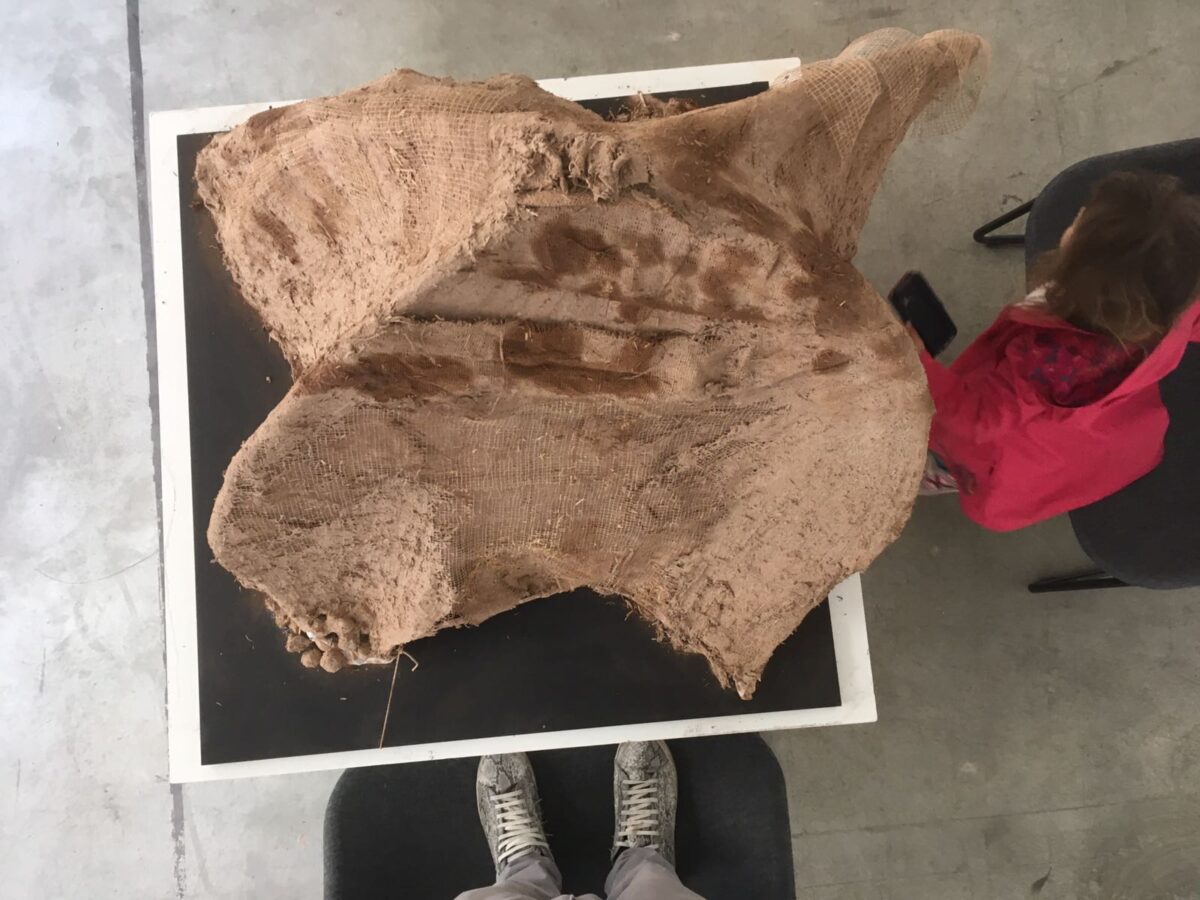Design Probes Colloquim Vienna

First Year Design Probes
Innovation Lab Angwandte Vienna.
During 2 days, each ESR presnted his/her progress so far.
Here is the content of my presentation
Small Scale Robots spraying for large scale shells
I propose to take advantage of advanced robotic fabrication involving people fabricating and robots working simultaneously and real time sensing reacting devices to revisit principles of earth architecture.
This research takes as a point of departure the following assumption: Bringing revisited methods of earth architecture into parametric design and robotic fabrication could lead to very innovative and sustainable structures fabrication.
Theses hands on and simulation based digital fabrication methods continue building up on the knowledge from previous fabrication workshops ran at the architectural association London between 2012 and 2015.
Although this project takes its impetus in an academic environment, the primary objective is to hack immediately available technology to develop a patented sustainable large shell construction method based on merging very old with cutting edge mini robotic techniques.
The setting up of this hybrid technique relies on data flow control between clay mix properties, structure distortion along the process and constant recalibration of robotic spraying.
The first 6 months of the research, robotic arm has been tested on the fabrication of the earthen shells. (Clay spraying per layer on temporary fabric formwork.
The research has slowly moved to smaller robots able to reach the different areas of the shell, hence drones available for agricultural purposes are being explored for the next stage of the research.
During the first-year colloquium in Vienna hosted by IoA/Angewandte the following comments by the scientific committee were addressed regarding the following steps of this research.
Wattle and daub is a traditional technique of raw earth architecture from which this research borrows some fabrication principles. This technique was said to be extremely cheap and that robotic techniques could add a significant amount of budget not allowing the technique to enter the general construction chain.
The research will therefore be based on minimizing the cost of the digital fabrication parts.
The thickness of the resulting shells produced was discussed as high inertia and indoors climatic comfort comes in great part from the significant thickness of earth construction.
The research will continue exploring the idea of earthen shells first working in traction when the fabric formwork is still present and working in compression when large thicknesses (20 cm thickness for 1 3m high shell) are achieved by multiple layers’ matter deposition.
Some comments were made regarding upside down experiments. Those have been carried out in previous fabrication experiments and can influence the geometry research on the earthen shells
Manual crafts & robotic spraying used to prototype large scale lightweight earthen shells @stechalfive @IAAC #McNeel #ROK #innochain pic.twitter.com/M9LDJTZ6Ms
— InnoChain (@inno_chain) March 8, 2017
